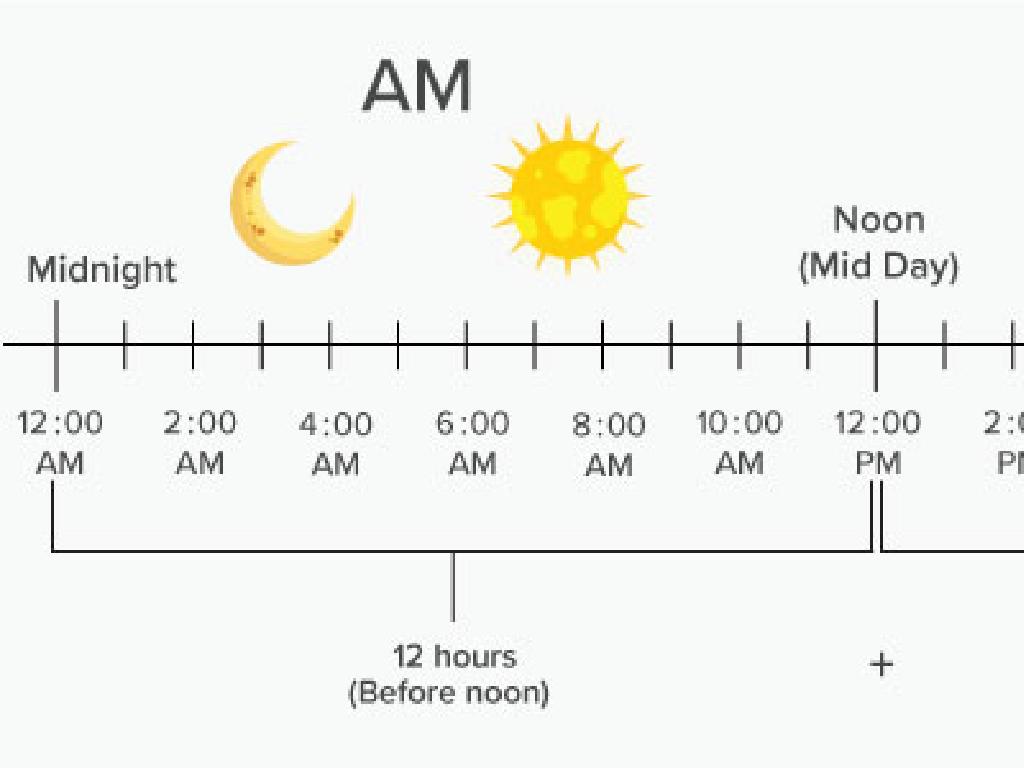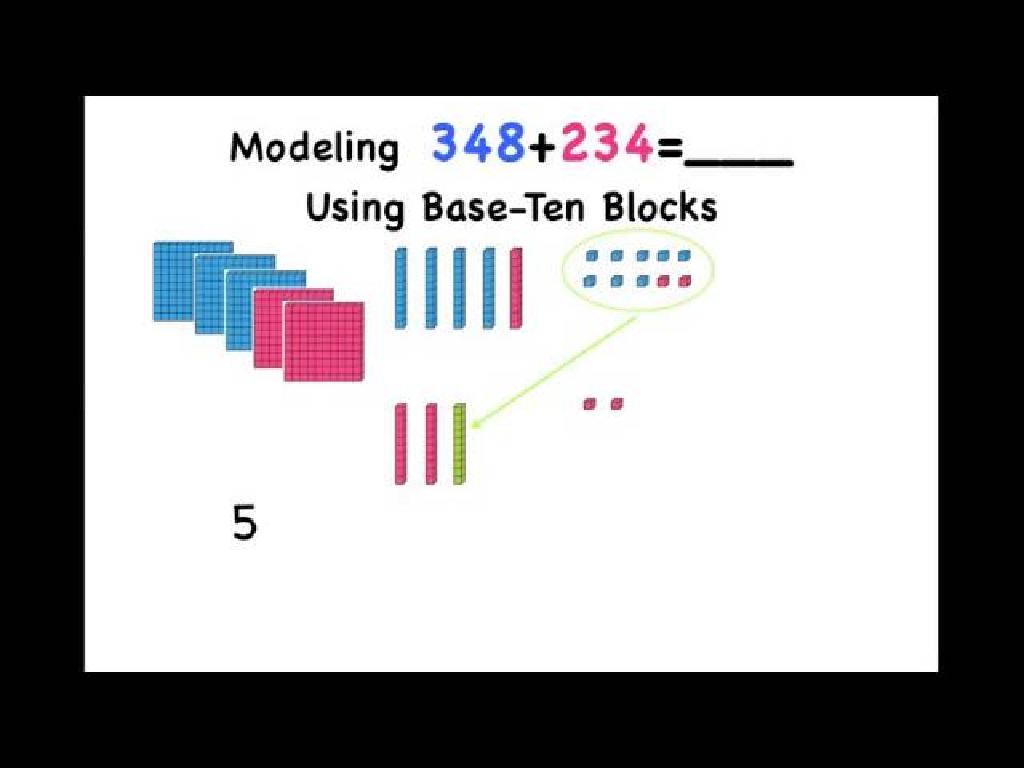Contractions With "Not"
Subject: Language arts
Grade: Third grade
Topic: Contractions
Please LOG IN to download the presentation. Access is available to registered users only.
View More Content
Exploring Contractions with ‘not’
– What are contractions?
– A contraction is a shortened form of two words, like ‘don’t’ for ‘do not’.
– Examples of common contractions
– ‘Can’t’ for ‘cannot’, ‘I’m’ for ‘I am’.
– Today’s focus: ‘not’ contractions
– Words like ‘isn’t’, ‘aren’t’, and ‘won’t’ use ‘not’.
– Practice with ‘not’ contractions
– We’ll learn to make and use ‘not’ contractions.
|
This slide introduces the concept of contractions to third-grade students, focusing on those that include ‘not’. Begin by explaining that contractions are a way to make two words into one shorter word, which makes sentences easier to read and write. Provide examples of common contractions to illustrate the concept. Then, shift the focus to contractions with ‘not’, such as ‘isn’t’, ‘aren’t’, and ‘won’t’, explaining that these are used to make a sentence negative. Engage the students with practice exercises where they create sentences using ‘not’ contractions and identify them in given sentences. This will help them understand how contractions are formed and used in everyday language.
Understanding Contractions with ‘Not’
– What is a contraction?
– A contraction combines two words into one.
– Apostrophes in contractions
– An apostrophe replaces the omitted letters.
– Example: do not to don’t
– ‘Do not’ shortens to ‘don’t’ with an apostrophe.
– Practice spotting contractions
– Find contractions in sentences and see how they’re formed.
|
This slide introduces the concept of contractions, focusing on those that include the word ‘not’. Explain that a contraction is a way to shorten two words into one, making sentences easier to read and write. The apostrophe is a critical punctuation mark in contractions, showing where letters have been removed. Use ‘do not’ becoming ‘don’t’ as a clear example, and encourage students to practice by identifying contractions in their reading or creating their own from two separate words. This foundational understanding will help them in reading comprehension and in writing more naturally.
Understanding Contractions with ‘not’
– ‘Not’ becomes ‘n’t in contractions
– Examples: isn’t, aren’t, can’t
– isn’t = is not, aren’t = are not, can’t = cannot
– Practice reading contractions
– We’ll read contractions together in class
– Recognize and use them in sentences
– Find contractions in your favorite book
|
This slide introduces the concept of contractions with ‘not’, emphasizing the change to ‘n’t. Start by explaining that contractions make our speech and writing quicker and more natural. Provide clear examples on the board and pronounce them with the class. During practice, have students read contractions aloud to ensure proper understanding and pronunciation. Encourage them to recognize these contractions in sentences and use them in their daily writing. As an activity, students could look for contractions in their favorite books or stories and share them with the class.
Creating Contractions with ‘not’
– Making contractions with ‘not’
– Remove ‘o’ and add apostrophe
– Turn ‘cannot’ into ‘can’t’
– Example: will not to won’t
– ‘Will not’ shortens to ‘won’t’
– Practice with different words
– Try ‘do not’ to ‘don’t’, ‘did not’ to ‘didn’t’
|
This slide introduces the concept of forming contractions with the word ‘not’. Explain that contractions are a way to shorten words to make them easier and quicker to say. When ‘not’ is part of a contraction, the ‘o’ is removed, and an apostrophe takes its place. Use ‘will not’ becoming ‘won’t’ as a clear example. Encourage students to practice this pattern with other words and to notice how the spelling can change, as with ‘will not’ to ‘won’t’. Have students come up with their own examples and write them down for practice. This exercise helps with reading fluency and understanding informal writing.
Contractions with ‘not’: Exceptions to the Rule
– Most use ‘n’t’ for contractions with ‘not’
– ‘Will not’ turns into ‘won’t’
– Unlike ‘don’t’ or ‘can’t’, ‘will not’ changes form
– Some contractions are irregular
– Think: Why is ‘won’t’ for ‘will not’?
– Is it because of how it sounds or its history?
|
This slide introduces students to the concept that while most contractions with ‘not’ simply add ‘n’t’ to the word, there are exceptions. ‘Will not’ becomes ‘won’t’, which doesn’t follow the usual pattern. Encourage students to think about the possible reasons for this irregularity. Is it because ‘willn’t’ is harder to pronounce, or could it be related to the word’s history? This discussion can lead to a deeper understanding of language evolution and the importance of usage in determining grammar rules. Have students come up with other examples and explore the origins of these irregular contractions.
Let’s Practice Contractions with ‘not’
– Turn ‘is not’ into a contraction
– ‘is not’ becomes ‘isn’t’
– Change ‘has not’ into a contraction
– ‘has not’ changes to ‘hasn’t’
– Find the contraction for ‘could not’
– ‘could not’ contracts to ‘couldn’t’
|
This slide is an interactive class activity designed to help students practice forming contractions with the word ‘not’. Start by explaining that a contraction is a shortened form of two words, where an apostrophe replaces omitted letters. For example, ‘is not’ becomes ‘isn’t’. Encourage students to identify the two words in each contraction and notice where the apostrophe is placed. Have students practice by writing sentences using these contractions to reinforce their understanding. Possible activities include a contraction matching game, a contraction hunt in a reading passage, and creating a contraction flip book.
Contractions with ‘Not’
– Contractions make sentences shorter
– Like ‘do not’ becomes ‘don’t’
– Practice writing contractions with ‘not’
– Turn ‘can not’ into ‘can’t’ and write a sentence
– Example: ‘I can’t wait for recess!’
– Shows excitement and is easier to say!
|
This slide introduces the concept of contractions to the students, emphasizing how they help in making sentences shorter and more conversational. Explain that contractions are often used in spoken English and informal writing. Provide examples of contractions with ‘not’, such as ‘isn’t’, ‘aren’t’, ‘won’t’, and ‘can’t’. Encourage the students to come up with their own sentences using these contractions. For instance, ‘She isn’t coming to the party’ or ‘They won’t finish the game before dinner’. This will help them understand how contractions fit into everyday language and prepare them for an activity where they will write their own sentences using contractions with ‘not’.
Class Activity: Contraction Surgery
– Play the role of ‘word surgeons’
– Cut out words and apostrophes
– Create new contraction words
– For example, ‘do not’ becomes ‘don’t’
– Present your contractions to the class
|
In this engaging class activity, students will act as ‘word surgeons’ to learn about contractions with ‘not’. Provide students with sentences containing ‘not’ and have them physically cut the words and apostrophes from paper. They will then combine the parts to form contractions, such as turning ‘can not’ into ‘can’t’. After creating their contractions, students will share their new words with the class, reinforcing their understanding through teaching their peers. Prepare a list of sentences for the students to work with and ensure that scissors and glue are available. Possible variations of the activity could include working in pairs, creating a contraction wall with all the new words, or even a matching game where students find the two words that make up a contraction.






